As more people are living longer, the 50s might well be the new 30s. As such, is it truly sustainable to be in a mongamous relationship and not just stay together for the kids? This is a list of books on understanding about and navigating open relationships. I have personally read the first two and like to highly recommend it for those interested in this subject matter. The others came highly recommended by contacts I know.
| 1. The Ethical Slut, Third Edition: A Practical Guide to Polyamory, Open Relationships, and Other Freedoms in Sex and Love (2017) by
The classic guide to love, sex, and intimacy beyond the limits of conventional monogamy has been fully updated to reflect today’s modern attitudes and the latest information on nontraditional relationships. For 20 years The Ethical Slut has dispelled myths and showed curious readers how to maintain a successful polyamorous lifestyle through open communication, emotional honesty, and safer sex practices. The third edition of this timeless guide to communication and sex has been revised to include interviews with poly millennials (young people who have grown up without the prejudices their elders encountered regarding gender, orientation, sexuality, and relationships), tributes to poly pioneers, and new sidebars on topics such as asexuality, sex workers, and ways polys can connect and thrive. The authors also include new content addressing nontraditional relationships beyond the polyamorous paradigm of “more than two”: couples who don’t live together, couples who don’t have sex with each other, nonparallel arrangements, couples with widely divergent sex styles, power disparities, and cross-orientation relationships, while utilizing nonbinary gender language and new terms that have come into common usage since the last edition. |
 |
| 2. Opening Up: A Guide to Creating and Sustaining Open Relationships (2008) by Tristan Taormino
Relationship expert and bestselling author Tristan Taormino offers a bold new strategy for creating loving, lasting relationships. Drawing on in-depth interviews with over a hundred women and men, Opening Up explores the real-life benefits and challenges of all styles of open relationships ― from partnered non-monogamy to solo polyamory. With her refreshingly down-to-earth style and sharp wit, Taormino offers solutions for making an open relationship work, including tips on dealing with jealousy, negotiating boundaries, finding community, parenting and time management. Opening Up will change the way you think about intimacy. |
 |
| 3. Building Open Relationships: Your hands on guide to swinging, polyamory, and beyond! (2018) by
Have you read “that book” on non-monogamy and still wondered “But how do you actually DO this?” Are you totally great on the theory of open relationships, but feel like you don’t know how it works in practice? Join Dr. Liz Powell, psychologist, speaker, and coach, as she draws from her education, research, and life experience to bring you Building Open Relationships. This new book is an all-inclusive guide to beginning and maintaining your non-monogamous life, no matter where you fall under the non-monogamous umbrella. Complete with worksheets, discussion starters, examples, and hard-won lessons (i.e. my mistakes), this book will give you all the tools you need to be more successful in non-monogamy. |
 |
| 4. More Than Two: A Practical Guide to Ethical Polyamory (2014) by Franklin Veaux and Eve Rickert
Can you love more than one person? Have multiple romantic partners, without jealousy or cheating? Absolutely! Polyamorous people have been paving the way, through trial and painful error. Now the new book More Than Two can help you find your own way. With completely new material and a fresh approach, Franklin Veaux and Eve Rickert wrote More Than Two to expand on and update the themes and ideas in the wildly popular polyamory website morethantwo.com. From Ancient Greece through the many dynasties of China to current practices of non-monogamy, people have openly engaged in multiple intimate relationships. Not until the late 20th century, however, was a word coined that encapsulated the practice, as well as its philosophies, edicts and ethics: polyamory (poly = many + amore = love). For Franklin Veaux, who has been polyamorous for his entire adult life, the emerging framework and subsequent vocabulary for his lifestyle was a light in the dark. Candidly sharing his experiences and thoughts online catapulted his website morethantwo.com, among the first dedicated to the poly lifestyle, to one of the top-ranking on the subject. |
 |
| 5. Love’s Not Color Blind (2018) by Kevin A. Patterson
The issues that make monogamous dating daunting for people of color—shaming and exclusion by white partners, being fetishized, having realities of everyday racism ignored—occur in polyamorous relationships too, and trying “not to see race” only makes it worse. To make polyamorous communities inclusive, we must all acknowledge our part in perpetuating racism and listen to people of color. Love’s Not Color Blind puts forward the framework—through research, anecdotal testimony, and analogy—for understanding, identifying, and confronting racism within polyamorous communities. |
 |
| 6. Jealousy Survival Guide: How to feel safe, happy & secure in an open relationship (2017) by
Jealousy can have an enormous impact on some people, so it is no surprise that people (especially those who practice consensual non-monogamy) think, talk, and write about it quite a bit. In “Jealousy Survival Guide”, Kitty Chambliss does the homework for you and collects the best tidbits on life and emotions to give you inspiration and provide tools to gain and practice new skills. Combining her own life experience with these pearls of wisdom, Kitty focuses on jealousy in consensually non-monogamous relationships, what it is, how it expresses, and specific ways to manage it. Kitty’s frank discussion of her own struggles with jealousy and focus on specific skills and techniques — without a shred of blame — makes. |
 |
| 7. Rewriting the Rules (2018) by Meg John Barker
We live in a time of uncertainty about relationships. We search for The One but find ourselves staying single because nobody measures up. We long for a happily-ever-after but break-up after break-up leave us bruised and confused. Rewriting the Rules: An Anti Self-Help Guide to Love, Sex and Relationships is a friendly guide through the complicated – and often contradictory – advice that’s given about sex and gender, monogamy and conflict, break-up and commitment. It asks questions about the rules of love, such as which to choose from all the rules on offer? Do we stick to the old rules we learnt growing up, or do we try something new and risk being out on our own? And what about the times when the rules we love by seem to make things worse, rather than better? This new edition, updated throughout, considers how the rules are being ‘rewritten’ in various ways – for example in monogamish and polyamorous relationships, different ways of understanding sex and gender, and new ideas for managing commitment and break-up where economics, communities, or child-care make complete separation impossible. This book considers how the rules are being ‘rewritten’ in various ways, giving you the power to find an approach that best fits your situation. |
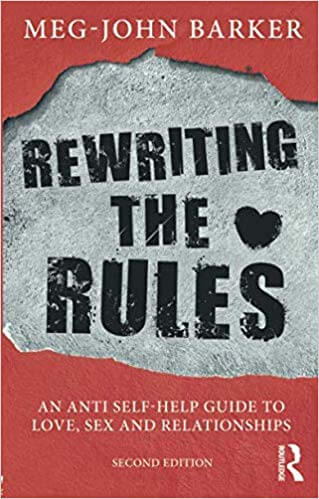 |
| 8. Polyamory in the 21st Century: Love and Intimacy with Multiple Partnersby
Unlike other books on this topic, Polyamory in the 21st Century weaves together research and facts to provide an informed and impartial analysis of polyamory as a lifestyle and as a movement, and to place it in a psychosocial as well as an historical context. Anecdotes and personal experiences allow the reader to develop a better understanding of polyamory and the people who practice and enjoy it. Anapol addresses the practical, the utopian, and the shadow sides of this intriguing, mysterious, yet often threatening lifestyle. It honestly addresses difficult issues such as the nature of commitment without exclusivity, balancing personal needs with loyalty to a partner, evaluating beliefs about love and relationship, the impact of polyamory on children, and the challenges that arise when one partner wants monogamy and another prefers polyamory. Without judgement, she explores this increasingly common practice, and reveals the true nature of a lifestyle that many do not understand. |
 |
| 9. What Does Polyamory Look Like?: Polydiverse Patterns of Loving and Living in Modern Polyamorous Relationships by
“Finally, a book that explores what it truly means to be polyamorous by exploring the wonderful variety of poly relationships. Only through understanding poly’s innate diversity can one grasp what open relationships can off er. Th ank you, Mim, for a book that is relevant and useful, as polyamory moves out of the shadows and into the mainstream of society. It is an important resource for anyone who wishes to understand the growing poly movement as it changes our society and challenges our presumptions about relationships. Bravo!” Robyn Trask, Executive Director of Loving More Non-Profit and Magazine What is your relationship dream, and what options are out there to choose from? We’re familiar with monogamy, but what additional models of loving and living are offered by polyamory, and what do they look like in action? How is polyamory different from polygamy, swinging, or “cheating”? What new forms of etiquette are needed in order to nurture polys’ varied forms of family? Is it really possible to have a relationship in which love does not equal possessiveness? “Any relationship, from monogamous marriage to business enterprise to polyamorous family, will benefit from the practical relationship advice found within the covers of this well-written little book.” Matthew C. Cox, Life Coach and Author of Living the Southwest Lifestyle |
 |
| 10. Wide Open: My Adventures in Polyamory, Open Marriage, and Loving on My Own Terms by Gracie X
At a time when society no longer imposes many sexual taboos, why is open marriage still considered beyond the pale? Written by Gracie X, Wide Open is an enthusiastic, honest, and sometimes raw account of one woman’s experience living polyamorously within the context of her average American family. Gracie X―a suburban mother of two―has been married to her loving husband, Hank, for 25 years. The problem is that their once-vibrant sex life has shriveled to nothing. Meanwhile, she has fallen in love with another man, for whom she has an overwhelming physical yearning. Frustrated and conflicted but determined not to give up her hard-won home life and wonderful husband, she is desperate for a creative solution. Can she somehow keep both men in her life without resorting to divorce or dishonesty? A friend introduces Gracie to polyamory: loving and being faithful to more than one person at a time. “Poly,” it turns out, is a whole new world, with dedicated counselors, parties, and dating sites. Convincing Hank ended up being the easy part: he quickly found a girlfriend and accepted Gracie’s terms. Their children, although upset at first, adjusted to having their parents’ “special friends” around, and having Hank and his girlfriend in one duplex, with Gracie and her new boyfriend, Oz, next-door, seemed like an inspired solution. But would trying to go poly create as many problems as it was trying to solve? |
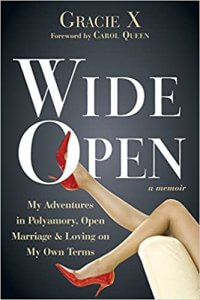 |
| 11. Undoing Monogamy: The Politics of Science and the Possibilities of Biology by
In Undoing Monogamy Angela Willey offers a radically interdisciplinary exploration of the concept of monogamy in U.S. science and culture, propelled by queer feminist desires for new modes of conceptualization and new forms of belonging. She approaches the politics and materiality of monogamy as intertwined with one another such that disciplinary ways of knowing themselves become an object of critical inquiry. Refusing to answer the naturalization of monogamy with a naturalization of nonmonogamy, Willey demands a critical reorientation toward the monogamy question in the natural sciences, social sciences, and humanities. The book examines colonial sexual science, monogamous voles, polyamory, and the work of Alison Bechdel and Audre Lorde to show how challenging the lens through which human nature is seen as monogamous or nonmonogamous forces us to reconsider our investments in coupling and in disciplinary notions of biological bodies. |
 |
| 12. It’s Called “Polyamory”: Coming Out About Your Nonmonogamous Relationships by
Even in progressive families and communities, people who practice nonmonogamy are susceptible to misinformation and accusations of moral and emotional failings. Facing this requires its own coming out and education process. In this guide, Tamara Pincus and Rebecca Hiles provide a roadmap for explaining the expansive intricacies of the consensual nonmonogamy spectrum. By fusing personal experience and community research, they break down the various incarnations of polyamorous relationship structures, polyamory’s intersections with race and gender, and the seemingly esoteric jargon of the lifestyle.Topics include everything from how to explain what a “unicorn hunter” is to answering questions like, “Can poly people raise children?” and “Can they live normal, healthy lives?” Such conversations are eloquently explained and the real dangers of being out as poly in a monogamy-centered society are laid bare. |
 |
| 13. The Jealousy Workbook: Exercises and Insights for Managing Open Relationships by Kathy Labriola
A counselor and nurse specializing in polyamorous singles, couples and groupings, Kathy Labriola has spent many years helping people to understand and manage their jealousy. This book is a compendium of the techniques and exercises she has developed, as well as tips and insights from the polyamory community’s top educators, therapists and authors. These accessible, simple techniques are designed to be easily implemented in the event of an intense jealousy crisis. They are even more useful if undertaken over a period of time before a jealousy crisis happens, to build a skill set that will be at hand to help managing jealousy when and if it does occur. |
 |
| 14. Stepping Off the Relationship Escalator: Uncommon Love and Life (Volume 1) by Amy Gahran
Love and relationships are not one-size-fits-all. Good thing we have options! Most people assume that healthy or serious relationships which involve romance and sex are supposed to follow this path: from attraction and dating, through exclusivity and living together, to marriage that ideally lasts a lifetime. However, there are plenty of other great ways to do relationships. Options that don’t involve lying, cheating, affairs, infidelity, avoiding dating or relationships, swearing off sex or love, or not being true to yourself or others. The “Relationship Escalator” is the traditional bundle of social norms for intimate relationships: monogamy, cohabitation and much more, ideally until death do you part. Beyond this, it might not be obvious what other options exist. |
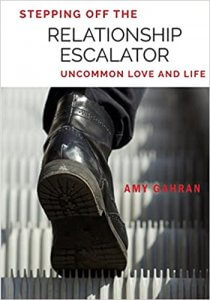 |
| 15. Pagan Polyamory: Becoming a Tribe of Hearts by Raven Kaldera
The term “polyamory” describes non-monogamous relationships based on honesty and affection. Presenting a fascinating peek inside the polyamorous lifestyle from a Pagan perspective, Raven Kaldera offers practical insight and spiritual depth into a vastly misunderstood way of life. Relating polyamory to astrology and the elements (air, fire, water, earth, and spirit), the author addresses all aspects of the polyamorous life, including family life, sexual ethics, emotional issues, proper etiquette, relationship boundaries, and the pros of cons of this lifestyle. Kaldera also discusses polyamory as a path of spiritual transformation and shares spells, rituals, and ceremonies for affirming one’s relationships and spirituality. |
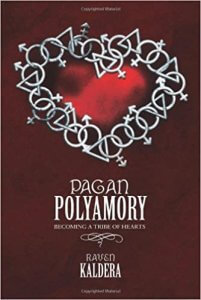 |
| 16. The Polyamorists Next Door: Inside Multiple-Partner Relationships and Families by Elisabeth Sheff
Marriage and monogamy are not what they used to be, and today many couples are opting to start families before getting married, or deciding not to get married at all. At the same time, gay couples in states that recognize same-sex marriage are getting married in droves. Some people prefer non-monogamy and have relationships that include swinging and polyamory. The landscape of American marriage and relationships is changing, and a variety of family systems are developing and becoming more common. The Polyamorists Next Door introduces polyamorous families, in which people are free to pursue emotional, romantic, and sexual relationships with multiple people at the same time, openly and with support from their partners, sometimes forming multi-partner relationships, or other arrangements that allow for emotional and sexual freedom within the family system. In colorful and moving details, this book explores how polyamorous relationships come to be, grow and change, manage the ins and outs of daily family life, and cope with the challenges they face both within their families and from society at large. Using polyamorists’ own words, Dr. Elisabeth Sheff examines polyamorous households and reveals their advantages, disadvantages, and the daily lives of those living in them. |
 |
| 17. When Someone You Love Is Polyamorous: Understanding Poly People and Relationships by Elisabeth Sheff
Having a friend or family member come out to you as polyamorous can be confusing and stressful. Chances are, you have a lot of questions: Is this just a phase? Won’t they settle down someday? What’s going to happen to their kids? Do I have to invite all their partners over for Thanksgiving dinner? Why can’t they just keep it in the bedroom? When Someone You Love Is Polyamorous offers answers to these and more questions, to help you better understand and support your polyamorous loved ones. |
 |
| 18. A Happy Life in an Open Relationship: The Essential Guide to a Healthy and Fulfilling Nonmonogamous Love Life (Open Marriage and Polyamory Book, Couples Relationship Advice from Sex Therapist) by Susan Wenzel
Discover the secrets to successful open relationships. A Happy Life in an Open Relationship is a handbook to healthy nonmonogamous relationships. For anyone curious about open relationships, here is a valuable handbook from an expert in love, sex, and communication. Relationship therapist Susan Wenzel—who is in an open marriage herself—delivers skillful advice on how to navigate the complex emotional landscape of multi-partner relationships, from polyamory to swinging. • Filled with of compelling personal stories, anecdotes from clients, and practical exercises A Happy Life in an Open Relationship will help you develop your trust and communication skills, explore sexuality and desire, build your confidence and self-worth, set healthy boundaries, overcome jealousy, and so much more. People interested in making changes in their relationships will appreciate the positive tone, helpful advice, and expert wisdom from an accomplished relationship therapist who has gone through the experience herself. |
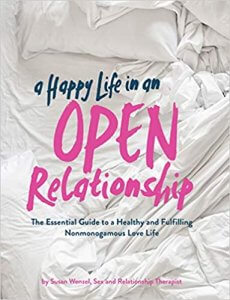 |
| 19. by Tammy Nelson, PhD
Love is eternal―but in an age when we live longer, communicate differently, and value gender equality, is it any wonder so many people are looking for new ways to support lasting, loving partnerships? “Monogamy is no longer a simple concept,” says Dr. Tammy Nelson. “More couples every year are experimenting with open relationships and newer, more flexible versions of commitment … yet few of us have been prepared with the skills we need to make those agreements work.” Open Monogamy is a practical guide for people who wish to explore new directions in their relationships―to bring in excitement, variety, and fresh experiences without sacrificing trust, security, and respect. |
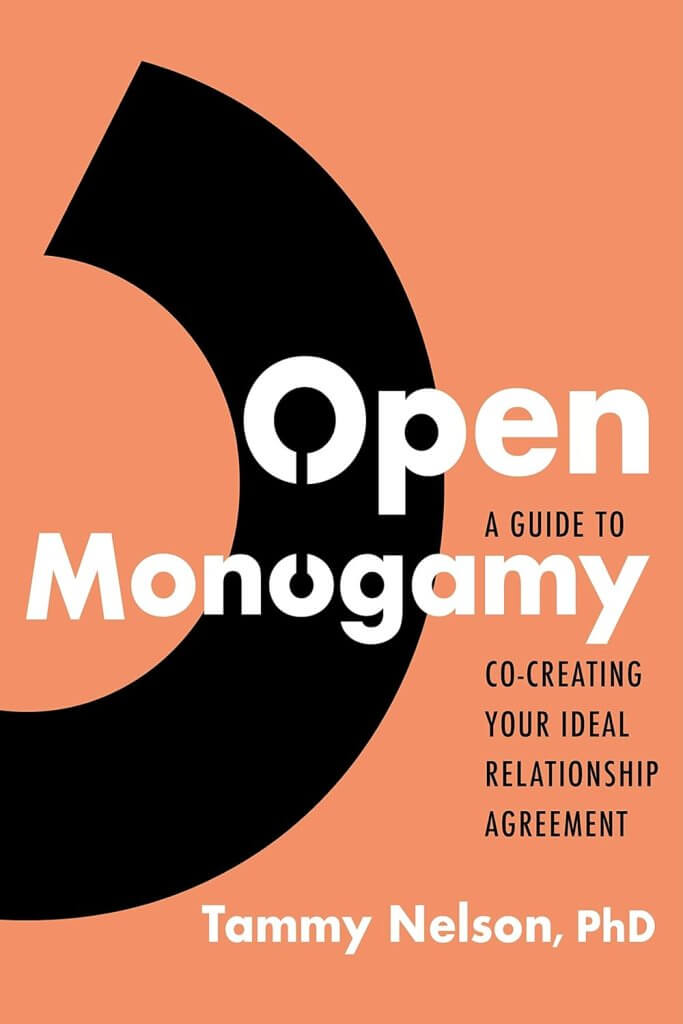 |
| 20.
Picking up where CNM self-help books like Polysecure, The Ethical Slut, and More Than Two leave off, Open Deeplytackles the most difficult challenges posed by CNM. Therapist Kate Loree—who has practiced non-monogamy since 2003, and who specializes in treating clients who also practice non-monogamy—pulls no punches as she uses vignettes based on her own life, as well as her clients’ experiences, to illustrate the highs, lows, and in-betweens of life as a consensual non-monogamist. Interwoven with these stories are thorough explanations of how attachment theory impacts non-monogamy, how blending cutting-edge, neurobiology-informed grounding skills with effective communication skills will make even the most challenging conversations regarding non-monogamy manageable, and more. The result is a compassionate, attachment-focused template for non-monogamy that will allow readers to avoid pitfalls and find adventure while concurrently building healthy relationships. |
 |
About Dr. Martha Tara Lee
 Surrounded by friends who were sexually inhibited and struck by dire lack of positive conversations around sex and sexuality in Singapore, Dr. Martha Tara Lee set out to make a positive difference in embarking on her doctorate in human sexuality before launching Eros Coaching in 2009. Today, she remains dedicated to working with individuals and couples who wish to lead self-actualised and pleasure-filled lives.
Surrounded by friends who were sexually inhibited and struck by dire lack of positive conversations around sex and sexuality in Singapore, Dr. Martha Tara Lee set out to make a positive difference in embarking on her doctorate in human sexuality before launching Eros Coaching in 2009. Today, she remains dedicated to working with individuals and couples who wish to lead self-actualised and pleasure-filled lives.
She also holds certificates in counselling, coaching and sex therapy, and her fourth degree – a Masters in Counselling in May 2018. In practice for more than nine years, she is the only certified sexuality educator and certified sexuality educator supervisor by the American Association of Sexuality Educators, Counselors and Therapists (AASECT) in Singapore.
Often cited in the local media, Dr. Lee is the appointed sex expert for Men’s Health Singapore, and Men’s Health Malaysia. She was recognised as one of ‘Top 50 Inspiring Women Under 40′ by Her World in July 2010, and one of ‘Top 100 Inspiring Women’ by CozyCot in March 2011. She is the host of weekly radio show Eros Evolution on the OMTimes Radio Network. She has published four books: Love, Sex and Everything In-Between, Orgasmic Yoga, From Princess to Queen and {Un}Inhibited.
Martha works with individuals and couples in private coaching sessions, and conducts her own workshops. She takes prides in making sure all her workshops are also fun, educational, and sex-positive. This comes easily to her because even though she is extremely dedicated and serious about her work, she fundamentally believes that sex is meant to be fun, wonderful, amazing and sacred. As such, this serious light-heartedness has shone through again and again. For her full profile, click here. Email her here.

 Become a Patron!
Become a Patron!
